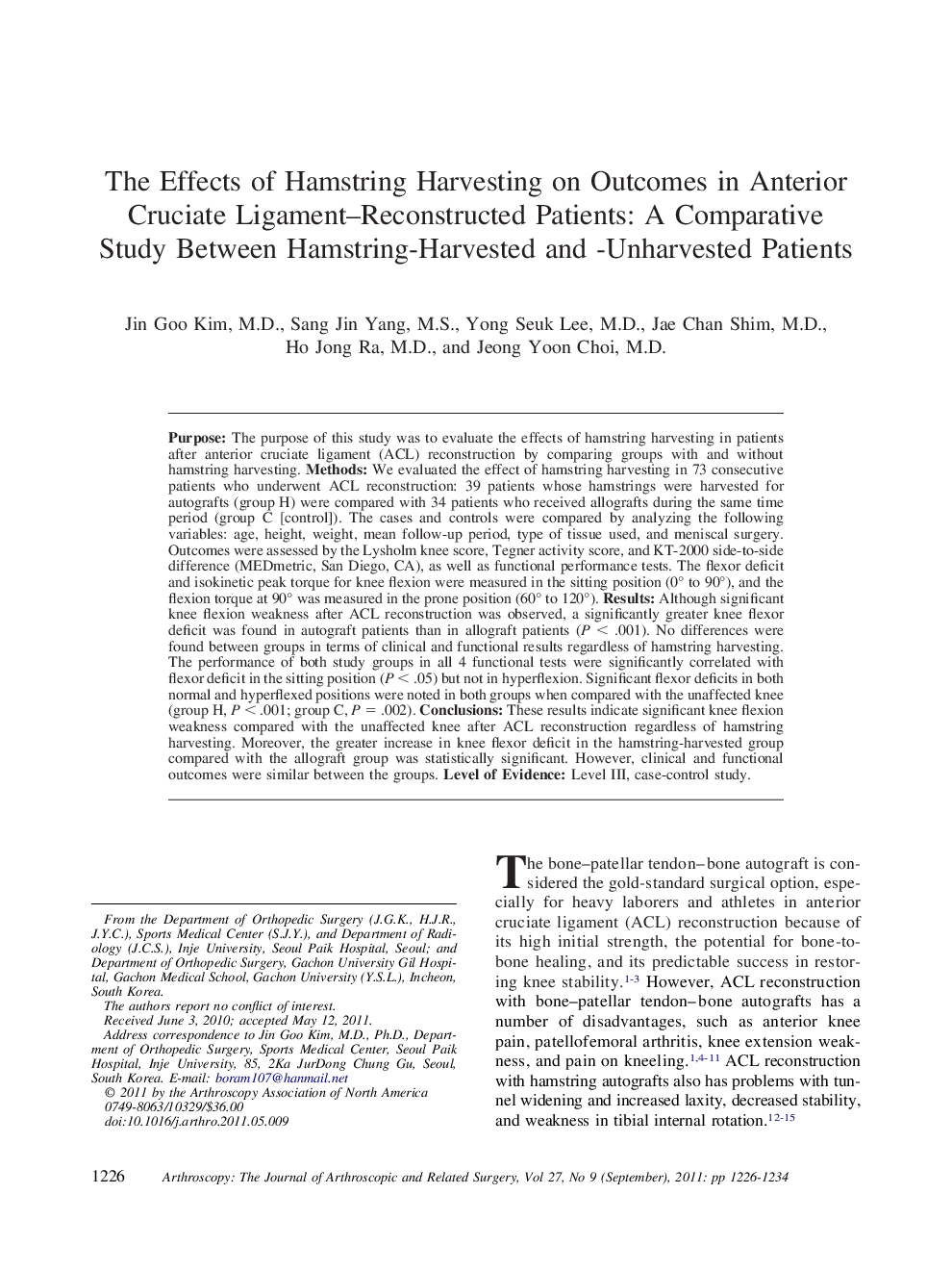| کد مقاله | کد نشریه | سال انتشار | مقاله انگلیسی | نسخه تمام متن |
|---|---|---|---|---|
| 4044673 | 1603538 | 2011 | 9 صفحه PDF | دانلود رایگان |

PurposeThe purpose of this study was to evaluate the effects of hamstring harvesting in patients after anterior cruciate ligament (ACL) reconstruction by comparing groups with and without hamstring harvesting.MethodsWe evaluated the effect of hamstring harvesting in 73 consecutive patients who underwent ACL reconstruction: 39 patients whose hamstrings were harvested for autografts (group H) were compared with 34 patients who received allografts during the same time period (group C [control]). The cases and controls were compared by analyzing the following variables: age, height, weight, mean follow-up period, type of tissue used, and meniscal surgery. Outcomes were assessed by the Lysholm knee score, Tegner activity score, and KT-2000 side-to-side difference (MEDmetric, San Diego, CA), as well as functional performance tests. The flexor deficit and isokinetic peak torque for knee flexion were measured in the sitting position (0° to 90°), and the flexion torque at 90° was measured in the prone position (60° to 120°).ResultsAlthough significant knee flexion weakness after ACL reconstruction was observed, a significantly greater knee flexor deficit was found in autograft patients than in allograft patients (P < .001). No differences were found between groups in terms of clinical and functional results regardless of hamstring harvesting. The performance of both study groups in all 4 functional tests were significantly correlated with flexor deficit in the sitting position (P < .05) but not in hyperflexion. Significant flexor deficits in both normal and hyperflexed positions were noted in both groups when compared with the unaffected knee (group H, P < .001; group C, P = .002).ConclusionsThese results indicate significant knee flexion weakness compared with the unaffected knee after ACL reconstruction regardless of hamstring harvesting. Moreover, the greater increase in knee flexor deficit in the hamstring-harvested group compared with the allograft group was statistically significant. However, clinical and functional outcomes were similar between the groups.Level of EvidenceLevel III, case-control study.
Journal: Arthroscopy: The Journal of Arthroscopic & Related Surgery - Volume 27, Issue 9, September 2011, Pages 1226–1234